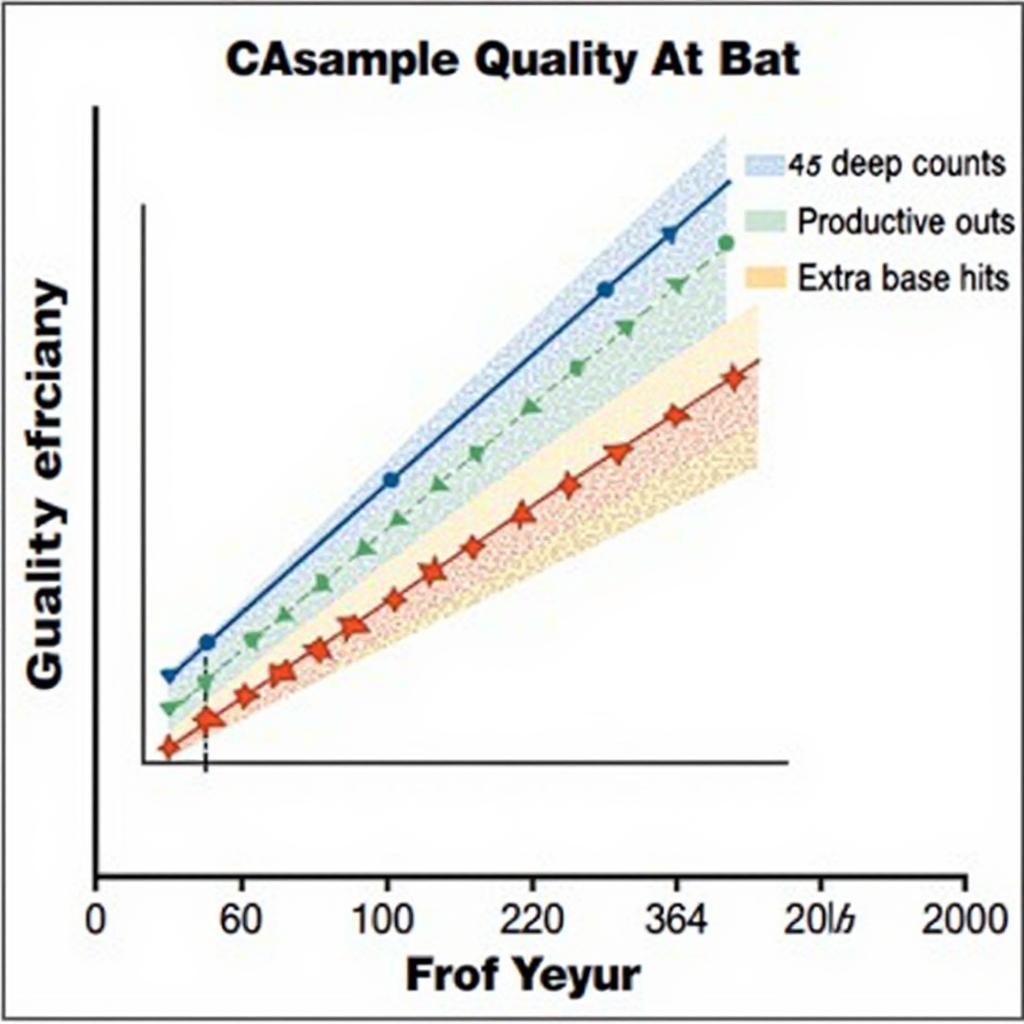Understanding the Quality At Bat Chart
October 26, 2024Quality At Bat Chart analysis is a crucial aspect of baseball, helping players and coaches identify areas for improvement. Understanding what constitutes a quality at bat (QAB) goes beyond simply getting a hit. It’s about making the most of every opportunity at the plate, putting pressure on the defense, and advancing the game even without getting on base. This article dives deep into the nuances of the quality at bat chart, exploring its significance and providing practical insights to enhance your performance.
You can improve your game significantly by understanding and applying the principles of quality at bat charts. After reading this article you’ll be well equipped to use this valuable tool for self-assessment and development. For those interested in other aspects of baseball, check out these Black Friday deals on baseball bats.
What is a Quality At Bat (QAB)?
A quality at bat is not just about getting a base hit. It encompasses a broader range of offensive contributions that positively impact a team’s chances of scoring. A QAB can include a hard-hit ball that results in an out, a walk, a sacrifice fly, or moving a runner into scoring position. Essentially, it’s about having a productive plate appearance regardless of the outcome recorded in the traditional box score.
A quality at bat often results in advancing runners, extending at-bats, and forcing the opposing pitcher to throw more pitches. By wearing down the pitcher, you create opportunities for your teammates later in the game. Sometimes, simply making solid contact can be considered a QAB, even if it results in an out.
 Example of a Quality At Bat Chart
Example of a Quality At Bat Chart
Why are Quality At Bat Charts Important?
Quality at bat charts provide a more nuanced understanding of offensive performance than traditional statistics. They help to identify players who are contributing positively even if their batting average isn’t stellar. This is particularly valuable for younger players who are still developing their hitting skills. By focusing on the process rather than just the results, players can build a foundation for long-term success.
For instance, a young player who consistently works deep counts and forces the pitcher to throw many pitches is developing valuable plate discipline. This skill translates to more walks, higher on-base percentages, and increased scoring opportunities for the team.
How to Use a Quality At Bat Chart
Using a quality at bat chart is straightforward. You simply track each plate appearance and mark whether it qualifies as a QAB based on predetermined criteria. These criteria might include:
- Working a full count
- Hitting the ball hard, even for an out
- Advancing a runner
- Drawing a walk
- Hitting a sacrifice fly
Tracking these elements allows for a more comprehensive analysis of a player’s offensive contribution. Are you looking for a red and blue baseball glove?
Setting QAB Goals
Setting realistic QAB goals is crucial for player development. A coach might set a goal for a player to achieve a certain percentage of QABs in a game or over a season. This provides a measurable objective that goes beyond simply getting hits. It encourages players to focus on the process of hitting and making productive contributions to the team’s offense. This emphasis on process over outcome can be especially beneficial for younger players. You might want to check out this blue Louisville softball bat.
Benefits of Focusing on QABs
Focusing on quality at bats has several benefits:
- Improved Plate Discipline: Players learn to be more selective at the plate, waiting for better pitches to hit.
- Increased On-Base Percentage: More walks and better contact lead to more runners on base.
- Better Situational Hitting: Players learn to adapt their approach based on the game situation, focusing on moving runners rather than just getting hits.
- Increased Confidence: By focusing on the process of hitting, players can build confidence even when they don’t get a hit.
By focusing on QABs, players develop a more mature and impactful approach to hitting. Have you seen these Louisville batting gloves?
The Importance of Patience at the Plate
Patience at the plate is a cornerstone of quality at bats. By waiting for the right pitch, you increase your chances of making solid contact. This also forces the pitcher to work harder, potentially leading to walks or mistakes that you can capitalize on.
Conclusion
Understanding and utilizing quality at bat chart analysis can significantly improve a player’s offensive performance. By focusing on the process of hitting and making productive contributions, players can become more valuable assets to their team. Quality at bat charts provide a valuable tool for tracking progress and identifying areas for improvement.
FAQ
- What counts as a quality at bat? A quality at bat can include a hard-hit ball, a walk, a sacrifice fly, or moving a runner into scoring position.
- Why are QABs important? QABs provide a more nuanced understanding of offensive performance than traditional stats.
- How can I improve my QABs? Focus on plate discipline, pitch selection, and situational hitting.
- Are QABs only for young players? No, QAB principles benefit players of all skill levels.
- How do I track QABs? Use a quality at bat chart to track each plate appearance.
- What are some examples of QABs? Working a full count, advancing a runner with an out, drawing a walk.
- How do QABs relate to on-base percentage? Focusing on QABs often leads to a higher on-base percentage.
For further information, explore our resources on all-star youth catchers gear.
Need support? Contact us 24/7: Phone: 0963418788, Email: [email protected] or visit us at 2M4H+PMH, Phường Nghĩa Thành, Gia Nghĩa, Đắk Nông, Việt Nam.